
Today’s guests are the founders and organizers of Siege Climbing. Siege Climbing is a competition series set for and by women, non-binary and gender minorities in the community. With us today is Hannah Barker (pronouns she/her), founder of Siege Climbing. Hannah is deep in the competition setting scene, and she works to mentor and uplift other underrepresented people in the industry. We also have Jiarra Chiang here (pronouns she/he/they), head routesetter and maintenance man at Vertical Ventures. Jiarra has set throughout the Southeast and is currently finishing up internships toward her L3 this USA climbing season. Last but not least, Hayley Moran (pronouns she/her). Hayley is an L3 routesetter and advocator of the professionalization of the routesetting industry. The trio finished up their first season of Siege Climbing comps last year and are now in the middle of the second one.
Thank you Trango and Vertical Solutions for your support!
And thank you Devin Dabney for your music!
Timestamps
00:00 – Intro
02:19 – Origins of Siege
04:36 – Barriers faced during career progression
08:21 – What the widely represented demographic might not know
11:25 – Are the same opportunities offered to everyone?
16:16 – What do affinity groups do to promote equity?
21:22 – Why bring on guest setters?
24:55 – What gaps does Siege fill?
26:39 – Advice for setters looking to join Siege or run an affinity comp
30:29 – Responses to those challenging Siege’s motives
33:21 – Takeaways from last season
38:39 – Additional thoughts
42:26 – Closing
Abridged Transcript
CHEN: Can you tell us a little bit more about Siege—its origins, histories, and how it came to be?
MORAN: At the end of 2020, I wanted to have a female–only comp at my gym, which was The Crag [Nashville] at the time. I expected it to be pretty small because we were still in quarantine, so not a lot of people were traveling. And basically, the week of the comp, it went from 10 or 15 people registered to 45, and lots of people were traveling from different cities and different states. What that told me was there’s a really big need for this in our community, and a lot of people in different gyms are maybe not getting this type of programming. From there, also later that year, Hannah and I set our first event together. We talked about maybe doing a setter swap because we wanted to set with more women; we were used to setting on all male crews. From there Hannah had the idea.
BARKER: I was working at a gym in Charlotte, North Carolina, and I had the idea of doing a women’s comp with an all-women setting crew. I was super excited for that, and at the time we had two other female setters on my crew, and then I met Jiarra at a different comp that season. I asked Jiarra and Hayley if they wanted to come up for this comp at the gym, the Queen’s Cup, and it was our first time doing an all-female comp with an all-female setting crew. It went super great, we had a really great turnout, and from there we just wanted to keep doing it. So we kind of rallied together for the next year and put together a series where we went to different gyms and kept it all-female crew and all-female, non-binary setters and competitors.
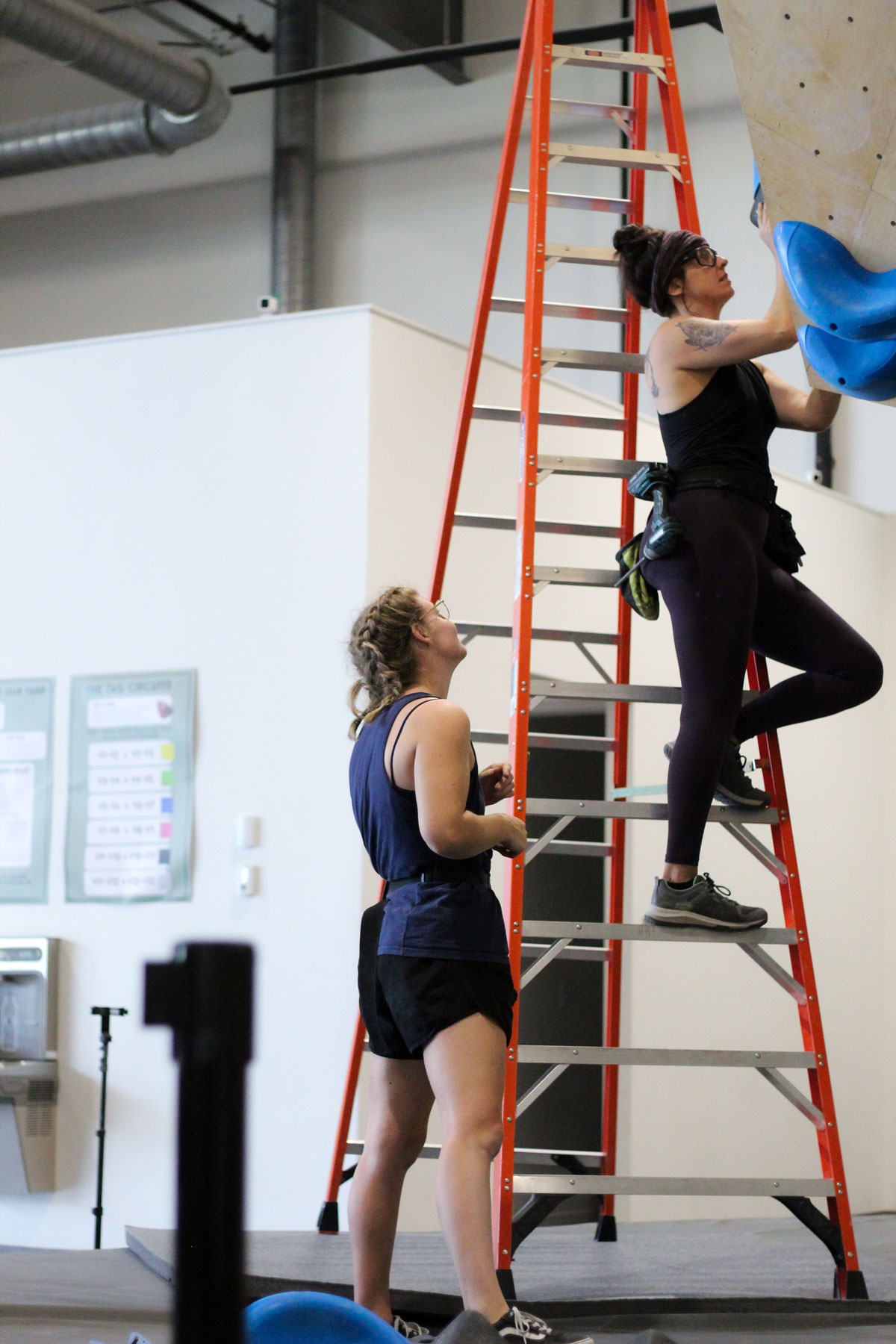
What were some of the barriers that you all faced as you progressed as a setter, and did those barriers influence or inspire you to create Siege?
MORAN: …For me, I knew from the time I set my first comp that competition setting is really where I thrived and what I loved. But my overall personality is pretty silly, and I found myself in this comp environment where the people who were respected and rewarded were the strongest in the room, the most serious in the room. It didn’t necessarily matter what the results of the comp were; it mattered how serious you were, how strong you were. And it wasn’t until I started setting these events with Hannah that I really felt like I could be myself. I could laugh, I could be silly. And we had great results, and I felt like I authentically got to be myself.
When I got to be myself, I could see that also through my routesetting. I wasn’t trying to set these moves that were awkward for me, to impress someone or the crew or try to network in a way that didn’t feel like myself because I was trying to promote myself through the industry. It felt like the more and more I set with women, the more routesetting became a lot more fun for me. And I think that we could see that in the results of the [Siege Climbing] comps too, that the competitors were also having a better time.
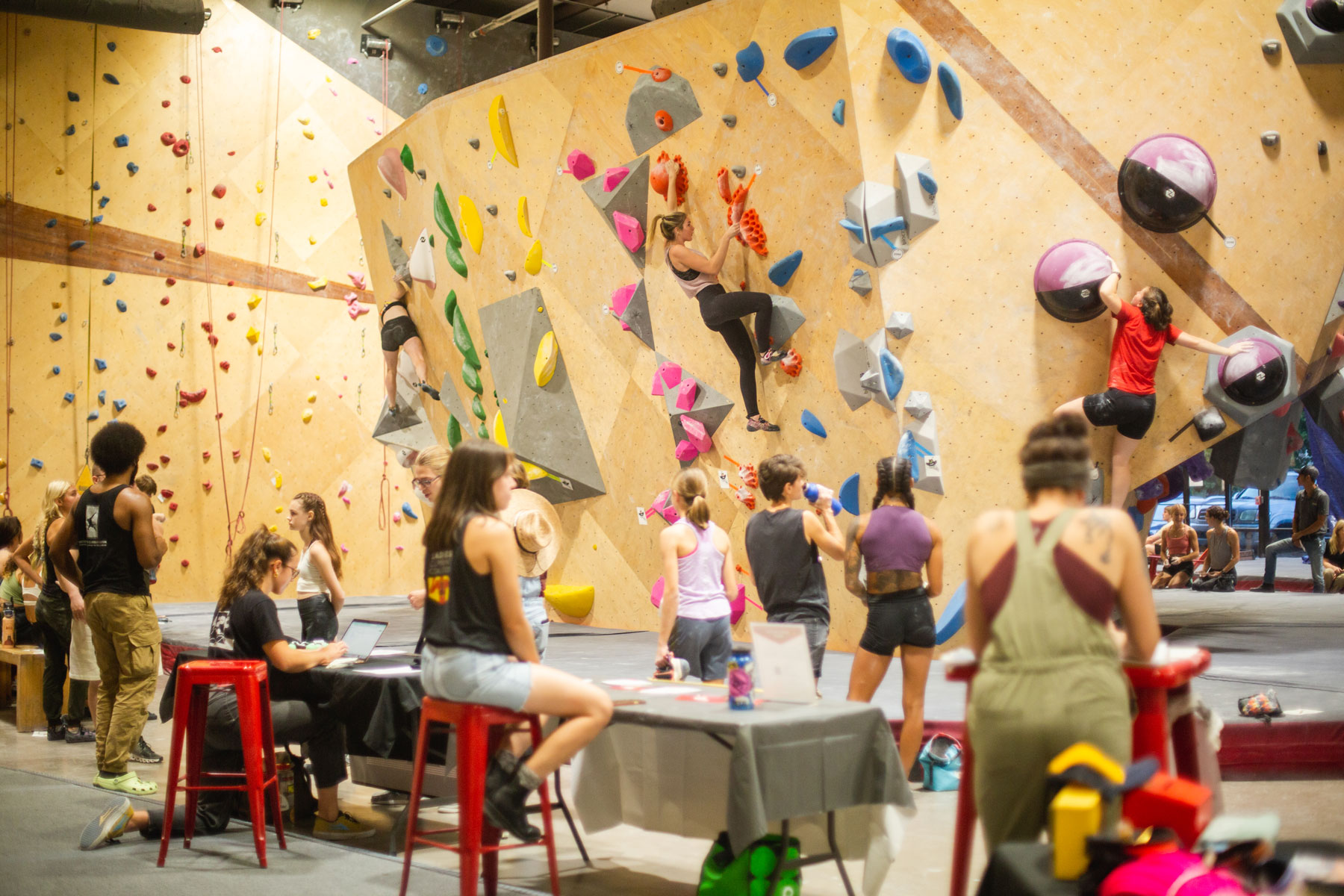
Why do you think affinity groups or affinity competitions like Siege or Womxn Up are so important to the climbing community? What are some of the systemic structures still in place that make affinity groups so necessary in our sport?
CHIANG: Because our sport is just an inner working of the world we live in, it reflects anybody’s day to day. In any sport you can look at, any major sport or small sport, most are pretty male-dominated. Even as a climber, you could go into a gym—and right now we see a lot more diversity than we did maybe five years ago as far as women climbing…But when you go to a gym and there’s a comp and you don’t see people like you competing, it doesn’t really make you want to compete. It doesn’t make you feel competitive or anything, even in just a friendly way. And because climbing and routesetting are so intertwined, you could see the same thing happening in routesetting. So having these groups show up for each other, whether at comps or in setting crews—it’s important to see yourself in those crews and see people like you also thrive and be challenged…
What are some affinity groups like Siege doing to alleviate the problems of inequity and safe access?
BARKER: The biggest thing is that we’re creating those opportunities and we’re putting them out there. If we’re not creating the space and the opportunities for marginalized groups and people who are underrepresented, then they’re not going to have an opportunity to even experience. So by creating environments that hopefully are more welcoming and more diverse and more comfortable, you’ll have people who are more willing to go outside of their box to try something new…
When I was thinking about Siege and everything that I wanted it to be, I would always think about how I felt for the onsite finals at comps. The male finals were always the show; they were the spotlight, they were in the front, they’re doing all these crazy moves. And then the women were also doing the onsite finals, but they always felt not as cool, not as flashy, not as front row and center…I think it’s great to be able to highlight that and put the female climbers in the spotlight, where they’re the only ones on the wall, they are the stars of the show, and there’s nothing overshadowing them. That’s what we’re spending time on.
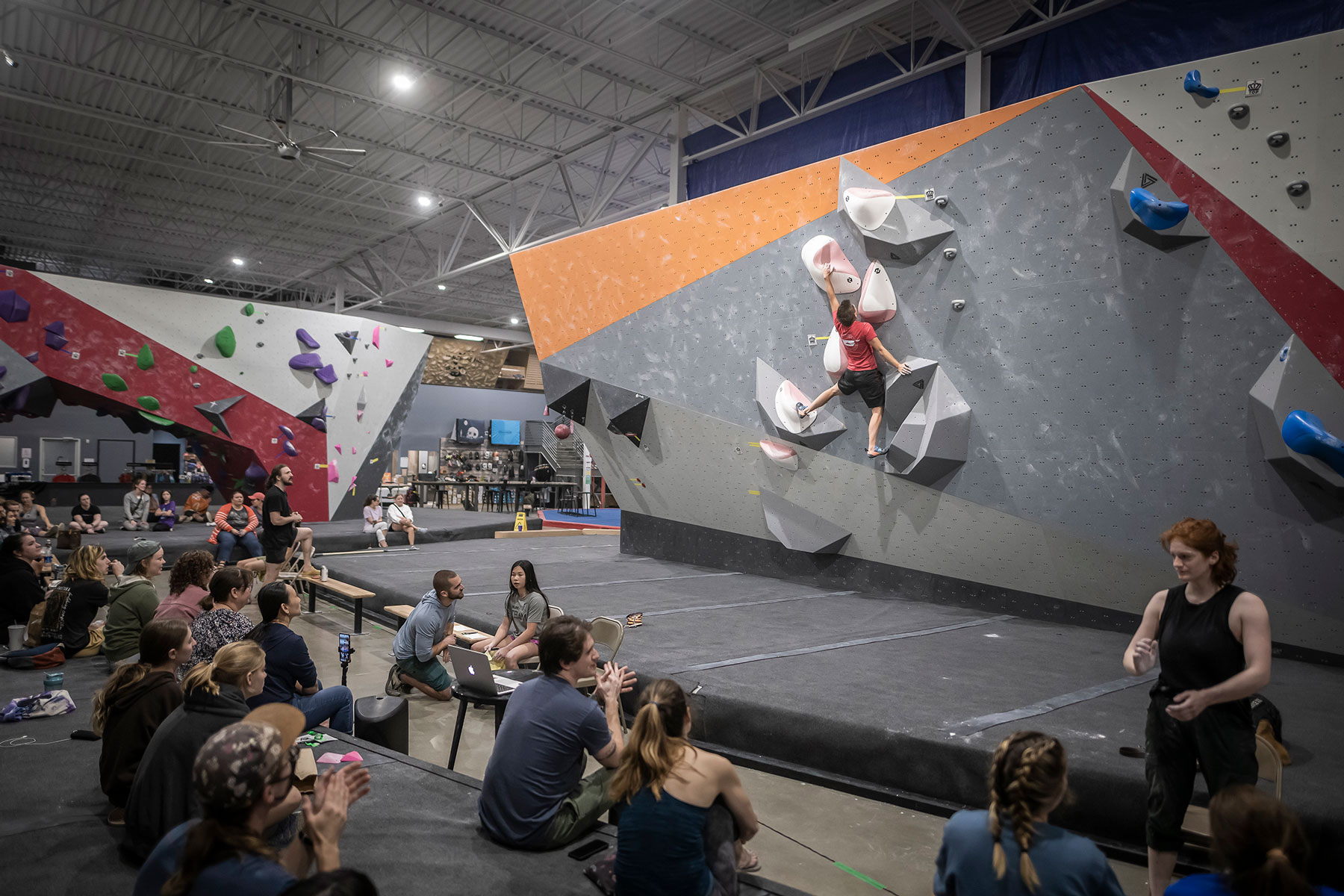
You mentioned that bringing on guest setters is really important to the competition. Why is that, and what kind of environment are you hoping to create for Siege guest setters?
CHIANG: From last year, we got so much feedback from the setters; literally mid-comp they’d be like, “I’ve never felt this included” or “This is the first time I felt like my opinion mattered.” And I think that even though our male colleagues may not always intend to make their female counterparts feel that way, it’s just a lack of thought. They might not even think that how they’re behaving or how they’re being is making somebody feel that way, but that’s because it’s not the forefront of what they’re thinking. So then when [female setters] come into a Siege crew, all of a sudden they’re like, “Wow, this is what it feels like to be listened to with intention.” And we got along so well, even with people we’ve never worked with…
What do you say to the people who think that all women or non-binary competitions create more exclusion instead of inclusion?
CHIANG: …All we’re trying to do is create inclusion. We’ve been excluded on all those crews. We haven’t felt included or safe enough to compete in those competitions. The white men have been included all this time. All we’re doing is trying to add more and create that space. Eventually, hopefully in the future, we want to look back or look at the current climate and say, “Wow, there’s already diversity.” I don’t want to always have an affinity group because we’re not included. Do you know what I mean? I would love to look at crews and think, “Wow, there’s a really even split between genders and races” and all that stuff, but there isn’t…
I like to say that we’ve been excluded all this time and this is just another method of adding something that wasn’t already there, to think of it as an adding on rather than a removal. It’s not like we have less all-gender competitions in the year. We’re not trying to remove from what’s already there; we’re just adding onto it…
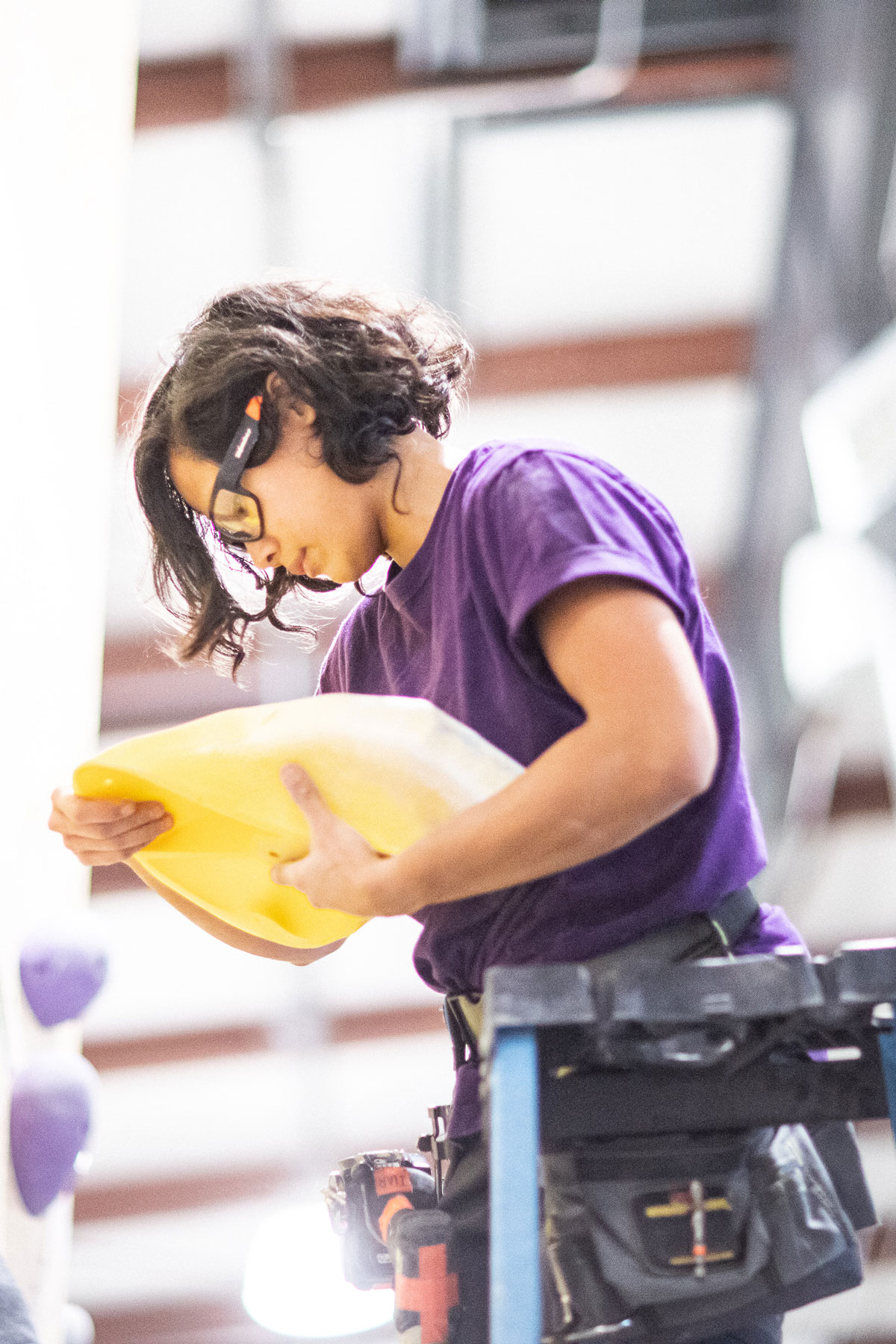
What are your major takeaways from last season, and what are you doing differently or keeping the same this season?
MORAN: …Because last year was so successful, we had a lot of gyms reach out. I think we had 11 gyms wanting to host, so it allowed us to be a little bit pickier. For example, we don’t want this event to just be the one token event for gyms to be like, “Wow, look at us. We’re doing something diverse; we’re having these people come in.” In our host agreement, we wrote that every gym has to have at least one event prior to Siege that is a women/non-binary event, and the gym can come up with their own programming and we’re here to assist that. And then they have to do an event afterward, to keep the ball rolling…We had to say no to a lot of gyms because their idea of what Siege was going to be was not our goal…Our goal is for all of the people who don’t get opportunities to compete to feel like this is an event for them…
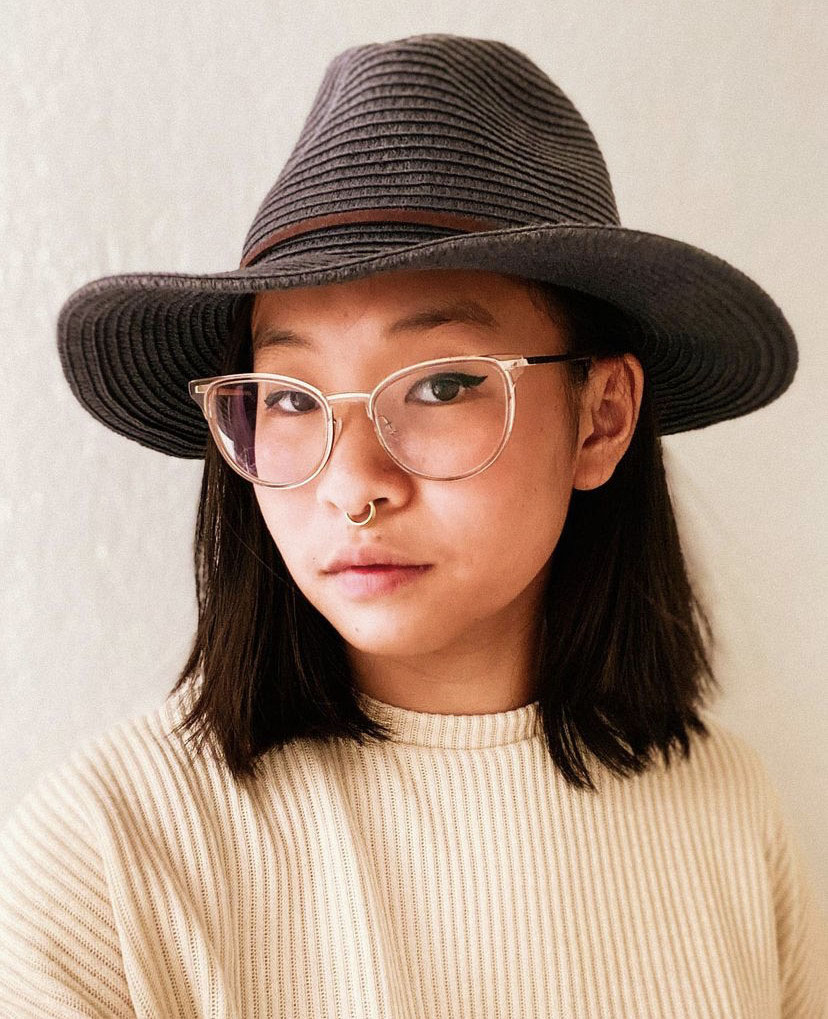
Holly grew up in Taiwan and Hong Kong. Now she lives in Denver where she reports, writes and routesets. Beyond the Climbing Business Journal, her writing has been published by Alpinist Magazine, Climbing Magazine, Gym Climber and Sharp End Publishing. Holly’s motto has always been: “keep it interesting.”
Read our interview with Holly: Storytelling Through Movement










